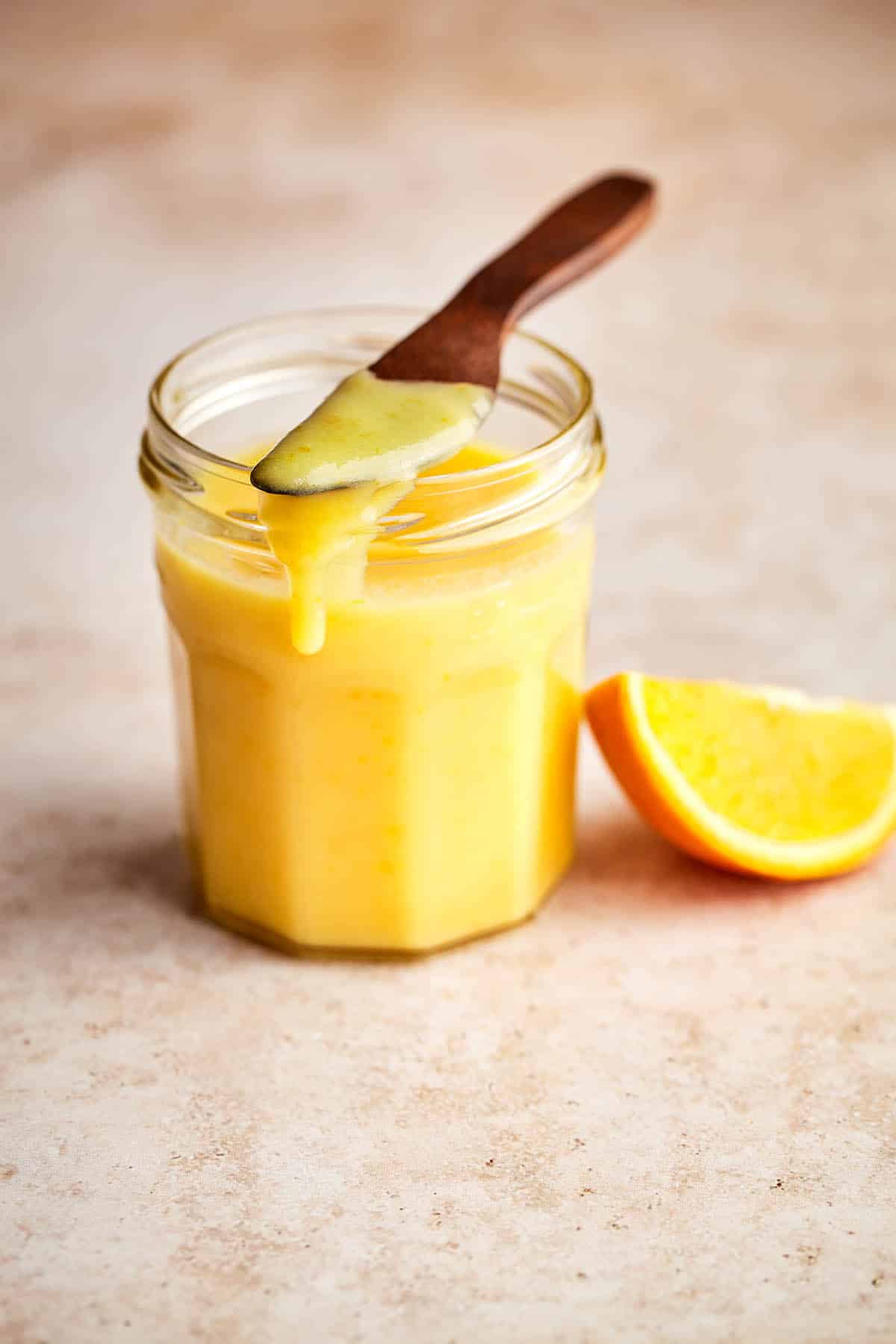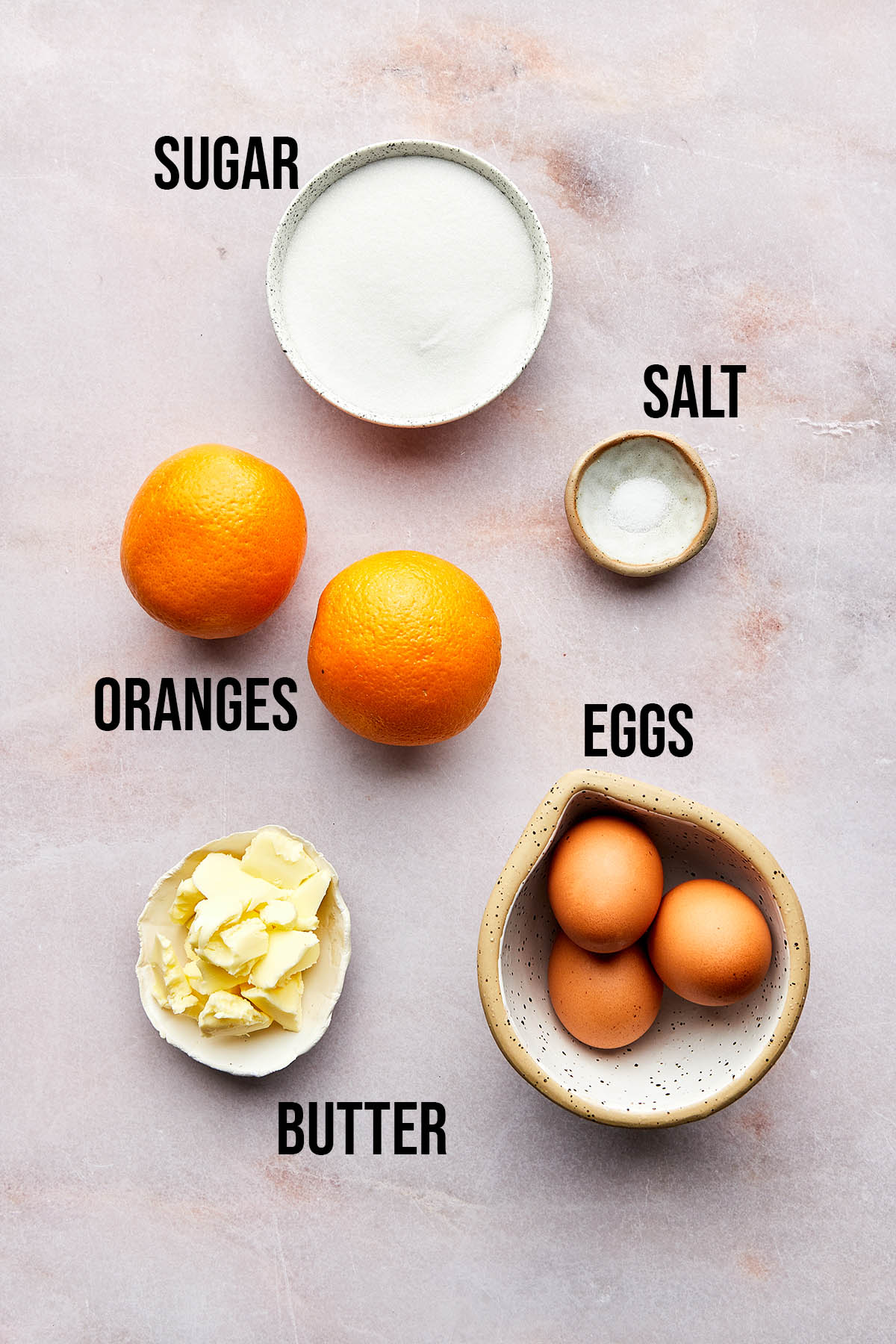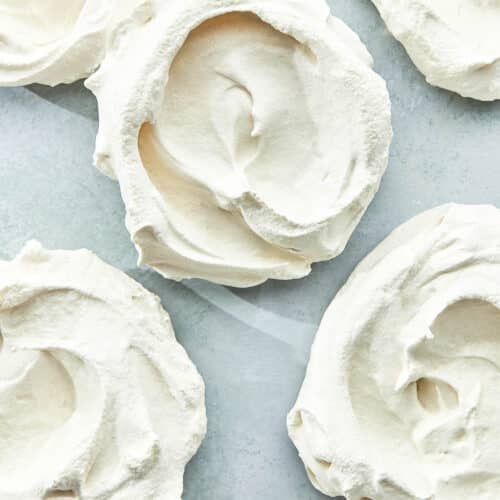Orange curd is a beautiful addition to your kitchen repertoire! Not as tangy as its lemon curd cousin, this orange version is more subtle and a bit sweeter in flavour.
Blurring the line between breakfast, brunch, and dessert, you can use orange curd as a topping or filling. For breakfast, try spreading it on these sourdough English muffins, toasted with a bit of butter. Spoon a bit over these raspberry buttermilk muffins at brunch, or sandwich it between these Earl Grey shortbread cookies for dessert.

Jump to:
Ingredients

Ingredient Notes and Substitutions
- Oranges: we use Navel oranges in this recipe. A ½ cup of fresh squeezed juice is needed, however, Navel oranges yield different amounts of juice. You may only use 1 or 1 ½ oranges.
- Digital Thermometer: not a food ingredient but we highly recommend using one for this recipe.
- Oranges: You can substitute any citrus juice you like for the orange juice.
- Orange Zest: feel free to omit if you're not a fan.
Method

Step 1: grate the zest of one orange and add 1 tablespoon to a medium-sized pot.
Step 2: juice the oranges.
Step 3: add the orange juice, sugar, salt, and eggs to the pot.
Step 4: whisk well to combine the let sit for 10 minutes for the sugar to dissolve.

Step 5: add the butter.
Step 6: whisk well.
Step 7: cook the orange curd over medium-low heat, stirring and taking temperature readings often.
Step 8: the curd is done at 175º to 180ºF (79º to 82ºC). Give it a final stir then store in clean glass jars with lids.
Top Tips
1. A hand mixer is a nice substitute for a handheld whisk.
2. The orange curd will thicken as it cools.
3. Make it in advance! It needs time to cool anyway, so make it a few days before you need it.
Recipe Notes
The orange zest should be grated fine with a microplane-style zester.
You want to cook the curd over medium-low heat to avoid scrambled egg bits. If you do notice some bits of cooked egg, simply push the curd through a sieve before storing in jars.
Once you see steam rising in the pot, the curd is getting close to temperature.
Another way to serve orange curd is packaged as holiday or hosting gifts. Simply store the curd in a cute jar, tie a ribbon and a handwritten tag around the top, and place it in a gift bag. So simple and so good!
How to Store
Storage: keep orange curd in clean glass jars with tightly secured lids for up to one week in the fridge.
Freezing: transfer fully cooled curd to airtight containers and freeze for up to three months.
Recipe FAQ
What is orange curd made of?
Orange zest and juice, sugar, salt, eggs, and butter.
Does orange curd need to be refrigerated?
Because it contains dairy and eggs, orange curd must be stored in the refrigerator to slow the growth of mold and other bacteria.
How do you serve orange curd?
One of the best thing about orange curd is you can serve it as a topping or a filling for many desserts. Try spreading it between cake layers, dolloping it into yogurt or over ice cream, or sandwiching it between sugar cookies. It's also terrific for breakfast spread on toast or scones!
Serve Orange Curd With
If you make this Orange Curd recipe or any other preserve recipes on the Baked Collective, please take a moment to rate the recipe and leave a comment below. It’s such a help to others who want to try the recipe. For more baking, follow along on Instagram, TikTok, and YouTube.
Orange Curd
Equipment
- Kitchen zester
- Medium pot
- sharp knife
- Citrus squeezer
- Measuring cups and spoons or digital kitchen scale
- Whisk or hand mixer
- Thermometer
- Glass jars with lids
Ingredients
- 2 medium Navel oranges
- ¾ cup sugar
- ¼ teaspoon salt
- 3 large eggs
- ¼ cup butter
Instructions
- Wash and dry the oranges. Grate the zest of one orange then add 1 tablespoon to a medium-sized pot. Reserve the rest for another use.
- Slice the oranges in half and squeeze out as much juice as you can. Pour ½ cup (125ml) juice in the pot with the orange zest. Store or drink any juice leftover.
- Add the sugar, salt, and eggs to the pot. Whisk everything well to combine, then let the mixture sit for 10 minutes so the sugar can begin to dissolve. Whisk again.
- Break the butter into small pieces and add them to the pot. Place the pot over medium heat on the stovetop and cook the curd to 175º to 180ºF (79º to 82ºC), stirring constantly.
- Once the curd has reached temperature, pour it into clean glass jars. Place the lids of the jars on top and slightly ajar until the curd cools to room temperature. Tightly secure the lids and store the curd in the refrigerator for up to one week.
Notes
- The orange zest should be grated fine with a microplane-style zester.
- You want to cook the curd over medium-low heat to avoid scrambled egg bits. If you do notice some bits of cooked egg, simply push the curd through a sieve before storing in jars.
- Once you see steam rising in the pot, the curd is getting close to temperature.




